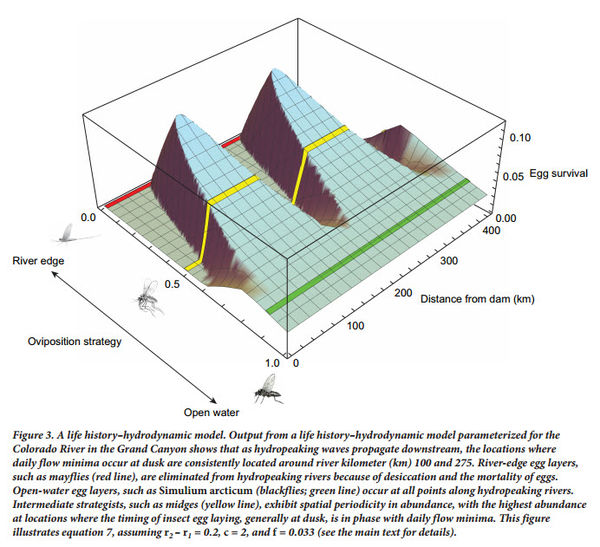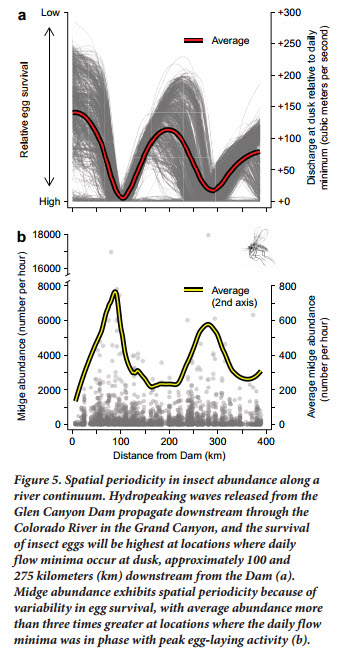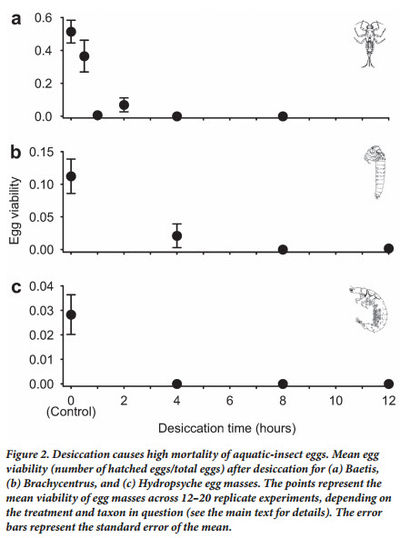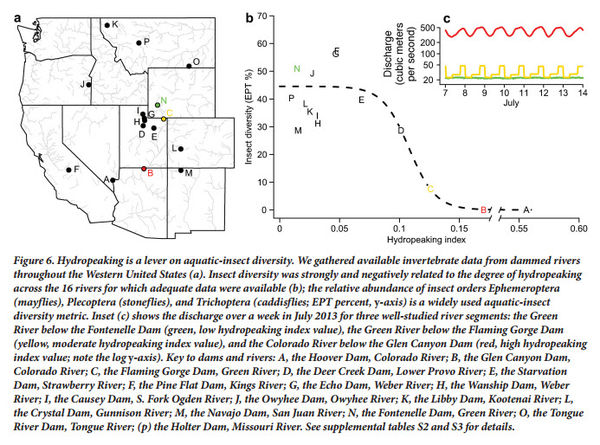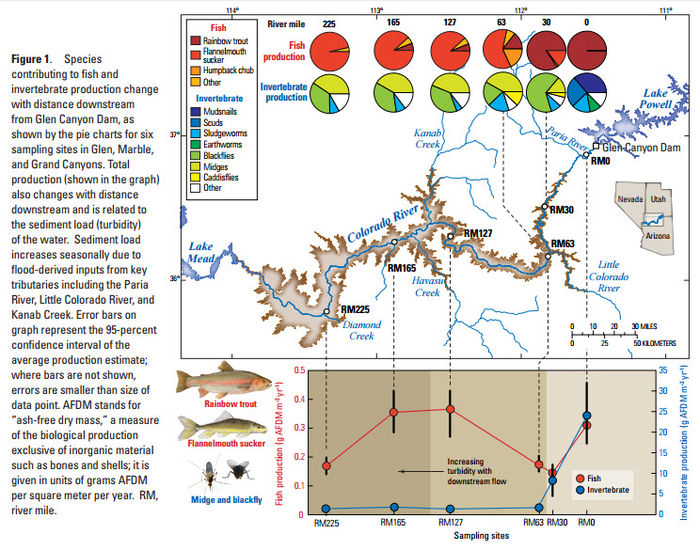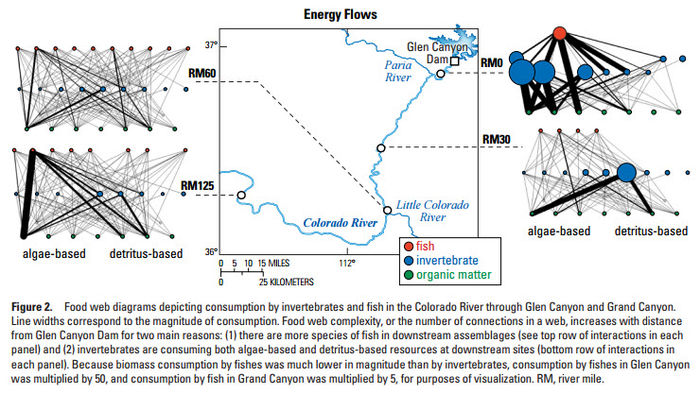Difference between revisions of "FOOD BASE"
Cellsworth (Talk | contribs) |
Cellsworth (Talk | contribs) |
||
| Line 23: | Line 23: | ||
[http://www.gcmrc.gov/research_areas/food_base/food_base_default.aspx '''The Aquatic Food Base below Glen Canyon Dam'''] | [http://www.gcmrc.gov/research_areas/food_base/food_base_default.aspx '''The Aquatic Food Base below Glen Canyon Dam'''] | ||
| − | The Colorado River below Glen Canyon Dam has been altered by dam-induced modifications to the river’s flow, temperature, and sediment supply. Nonnative species have also changed the natural system. Nonnative fish are thought to prey on and compete with native fish, including the endangered humpback chub (Gila cypha). These impacts have likely changed both the amount and sources of energy that fuel the aquatic food web and the flows of energy within the food web. Installation of the dam created a relatively clear, cool aquatic environment below the dam that now allows aquatic plants to capture the sun’s energy, and they in turn are now consumed by a few species, including scuds (Gammarus lacustris), midges (Family: Chironomidae), blackflies (Simulium arcticum), and New Zealand mudsnails (Potamopyrgus antipodarum). The first three species can provide food for both native and nonnative fishes, but fish cannot digest the New Zealand mudsnail. | + | The Colorado River below Glen Canyon Dam has been altered by dam-induced modifications to the river’s flow, temperature, and sediment supply. Nonnative species have also changed the natural system. Nonnative fish are thought to prey on and compete with native fish, including the endangered humpback chub (''Gila cypha''). These impacts have likely changed both the amount and sources of energy that fuel the aquatic food web and the flows of energy within the food web. Installation of the dam created a relatively clear, cool aquatic environment below the dam that now allows aquatic plants to capture the sun’s energy, and they in turn are now consumed by a few species, including scuds (''Gammarus lacustris''), midges (Family: Chironomidae), blackflies (''Simulium arcticum''), and New Zealand mudsnails (''Potamopyrgus antipodarum''). The first three species can provide food for both native and nonnative fishes, but fish cannot digest the New Zealand mudsnail. |
|}<!-- | |}<!-- | ||
| Line 41: | Line 41: | ||
|style="color:#000;"| | |style="color:#000;"| | ||
| − | Kennedy's 2016 Bioscience paper presents a conceptual model describing how hydropower flows could be limiting aquatic insect diversity and production by limiting the reproductive success of insects accustom to laying their eggs along the shoreline. It provides supporting data from an egg desiccation study done below Flaming Gorge Dam, light trap data collected in the Grand Canyon, and a comparison of fluctuation intensity and EPT diversity in several western US hydropower tailwaters. The paper concludes that egg desiccation from fluctuating flows is likely a leading factor in limiting aquatic insect diversity and production in tailwaters below hydropower facilities. The paper also proposes a | + | Kennedy's 2016 Bioscience paper presents a conceptual model describing how hydropower flows could be limiting aquatic insect diversity and production by limiting the reproductive success of insects accustom to laying their eggs along the shoreline. It provides supporting data from an egg desiccation study done below Flaming Gorge Dam, light trap data collected in the Grand Canyon, and a comparison of fluctuation intensity and EPT diversity in several western US hydropower tailwaters. The paper concludes that egg desiccation from fluctuating flows is likely a leading factor in limiting aquatic insect diversity and production in tailwaters below hydropower facilities. The paper also proposes a '''[[The Bugflow Experiment| bugflow experiment]]''' to be tested at Glen Canyon Dam as a possible mitigation for fluctuating flows made for hydropower production. |
[[File:EPThydropeakingModel.jpg|600px]] | [[File:EPThydropeakingModel.jpg|600px]] | ||
Revision as of 12:23, 25 July 2016
|
|
The Aquatic Food Base below Glen Canyon Dam The Colorado River below Glen Canyon Dam has been altered by dam-induced modifications to the river’s flow, temperature, and sediment supply. Nonnative species have also changed the natural system. Nonnative fish are thought to prey on and compete with native fish, including the endangered humpback chub (Gila cypha). These impacts have likely changed both the amount and sources of energy that fuel the aquatic food web and the flows of energy within the food web. Installation of the dam created a relatively clear, cool aquatic environment below the dam that now allows aquatic plants to capture the sun’s energy, and they in turn are now consumed by a few species, including scuds (Gammarus lacustris), midges (Family: Chironomidae), blackflies (Simulium arcticum), and New Zealand mudsnails (Potamopyrgus antipodarum). The first three species can provide food for both native and nonnative fishes, but fish cannot digest the New Zealand mudsnail. |
| --- |
--- |
--- |
|---|

